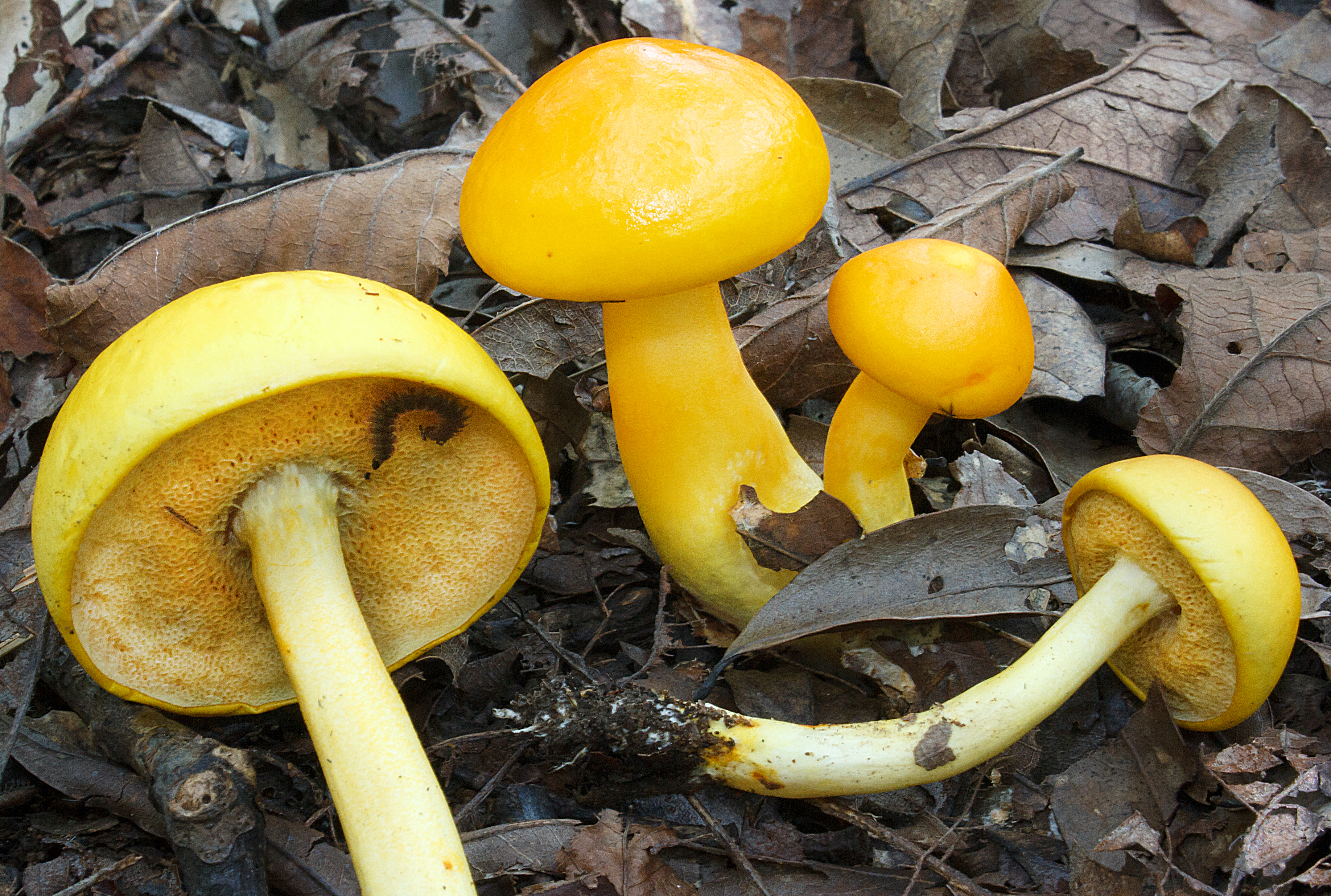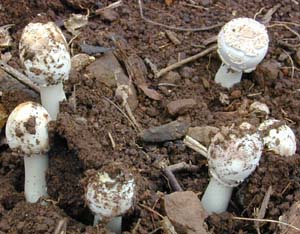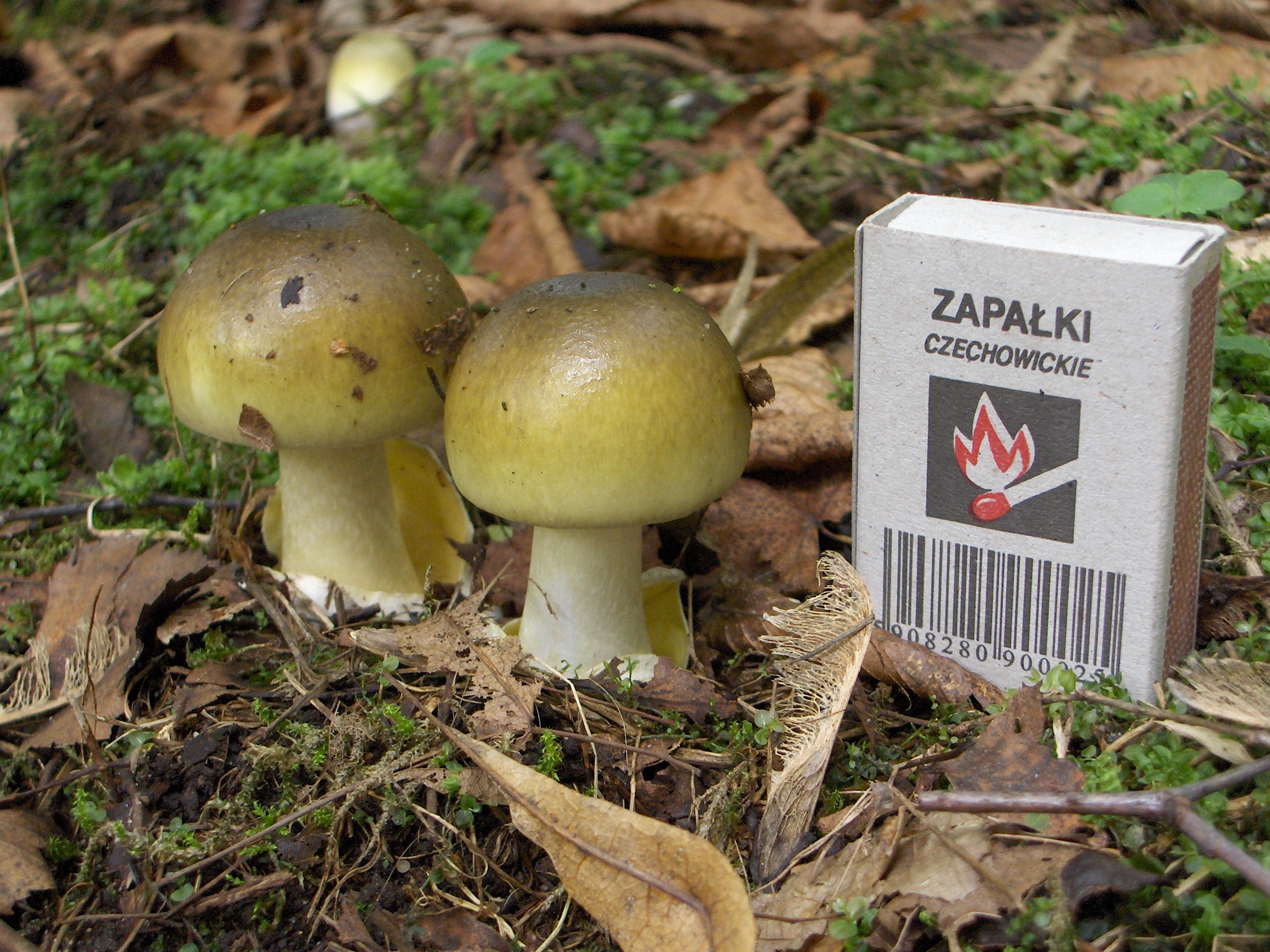|
Boletaceae
The Boletaceae are a Family (biology), family of mushroom-forming fungi, primarily characterised by small pores on the spore-bearing hymenium, hymenial surface (at the underside of the mushroom), instead of Lamella (mycology), gills as are found in most agarics. Nearly as widely distributed as the agarics, the family is renowned for hosting some prime edible species highly sought after by mushroom hunting, mushroom hunters worldwide, such as the Boletus edulis, cep or king bolete (''Boletus edulis''). A number of rare or threatened species are also present in the family, that have become the focus of increasing conservation biology, conservation concerns. As a whole, the typical members of the family are commonly known as boletes. Boletes are a group of mushrooms reasonably safe for human consumption, as none of them are known to be deadly to adults. Edible bolete species are especially suitable for novice collectors, since they pose little danger of being confused with deadly p ... [...More Info...] [...Related Items...] OR: [Wikipedia] [Google] [Baidu] |
Pulveroboletus
''Pulveroboletus'' is a genus of fungi in the family Boletaceae. The genus has a cosmopolitan distribution and contains 41 species. Taxonomy The genus was first described by American mycologist William Alphonso Murrill in 1909. He defined species in the genus as having a cap and stem "clothed with a conspicuous sulphur-yellow, powdery tomentum, which may be the remains of a universal veil: context white, fleshy; tubes adnate, yellowish, covered with a large veil: spores oblong-ellipsoid, ochraceous-brown: stipe solid, annulate, not reticulate." Murrill set ''Pulveroboletus ravenelii'' as the type species. Species The genus consists of the following species: Former species *''Pulveroboletus acaulis'', moved to ''Buchwaldoboletus acaulis'' *''Pulveroboletus flaviporus'', moved to ''Aureoboletus flaviporus'' *''Pulveroboletus parvulus'', moved to ''Buchwaldoboletus parvulus'' *''Pulveroboletus phaeocephalus'', moved to ''Xerocomus phaeocephalus'' *''Pulveroboletus viridis'', moved ... [...More Info...] [...Related Items...] OR: [Wikipedia] [Google] [Baidu] |
Xerocomus
''Xerocomus'' is a genus of poroid fungi related to ''Boletus''. Most members of ''Xerocomus'' are edible mushroom, edible, though of mediocre gastronomical value and inferior to the sought-after Boletus edulis, porcini. Taxonomy Many mycologists did not originally recognize the distinction between the two genera and placed ''Xerocomus'' taxa in genus ''Boletus''. However, several molecular phylogenetic studies have demonstrated that ''Xerocomus'' is a heterogeneous genus of polyphyletic origin, which has resulted in further division of ''Xerocomus'' into ''Xerocomellus'' and ''Hemileccinum''. The members of the genus ''Xerocomellus'' are more closely related to ''Boletus'' than true ''Xerocomus'' is, which is relatively distantly related to ''Boletus'' and more closely related to ''Phylloporus''. Other former ''Xerocomus'' species have since been moved to ''Aureoboletus'', ''Imleria'', ''Hortiboletus'' and ''Rheubarbariboletus''. Ladurner and Simonini published a monograph ... [...More Info...] [...Related Items...] OR: [Wikipedia] [Google] [Baidu] |
Leccinum
''Leccinum'' is a genus of fungi in the family Boletaceae. It was the name given first to a series of fungi within the genus '' Boletus'', then erected as a new genus last century. Their main distinguishing feature is the small, rigid projections (scabers) that give a rough texture to their stalks. The genus name was coined from the Italian ''Leccino'', for a type of rough-stemmed bolete. The genus has a widespread distribution, especially in north temperate regions, and contains about 75 species. Description Fruit bodies of ''Leccinum'' species have a slender stipe that is ornamented lengthwise with brown to black, scab-like scales on the surface. The stipe itself is colored white or cream and usually longer than the diameter of the cap. When injured, the stipe either remains unchanged in color or stains blue or red. The hymenophore is colored yellow or off-white, consists of thin and ventricose tubes that are longer than the thickness of the cap, and has small pores. The ... [...More Info...] [...Related Items...] OR: [Wikipedia] [Google] [Baidu] |
Boletus Edulis
''Boletus edulis'' (English: cep, penny bun, porcino) is a basidiomycete fungus, and the type species of the genus ''Boletus''. It is prized as an edible mushroom. The fungus produces Basidiospore, spore-bearing basidiocarp, fruit bodies above ground in summer and autumn. The fruit body has a large brown pileus (mycology), cap which on occasion can reach , rarely in diameter and in weight. Like other boletes, it has tubes extending downward from the underside of the cap, rather than gills; spores escape at maturity through the tube openings, or pores. The pore surface of the ''B. edulis'' fruit body is whitish when young, but ages to a greenish-yellow. The stout Stipe (mycology), stipe, or stem, is white or yellowish in colour, up to , rarely tall and thick, and partially covered with a raised network pattern, or wikt:reticulate, reticulations. The fungus grows in deciduous forest, deciduous and coniferous forests and tree plantations, forming symbiotic Mycorrhiza ... [...More Info...] [...Related Items...] OR: [Wikipedia] [Google] [Baidu] |
Boletus
''Boletus'' is a genus of mushroom-producing fungi, comprising over 100 species. The genus ''Boletus'' was originally broadly defined and described by Carl Linnaeus in 1753, essentially containing all fungi with hymenial pores instead of gills. Since then, other genera have been defined gradually, such as '' Tylopilus'' by Petter Adolf Karsten in 1881, and old names such as ''Leccinum'' have been resurrected or redefined. Some mushrooms listed in older books as members of the genus have now been placed in separate genera. These include such as ''Boletus scaber'', now '' Leccinum scabrum'', ''Tylopilus felleus'', ''Chalciporus piperatus'' and ''Suillus luteus''. Most boletes have been found to be ectomycorrhizal fungi, which means that they form a mutualistic relationship with the roots system of certain kinds of plants. More recently, ''Boletus'' has been found to be massively polyphyletic, with only a small percentage of the over 300 species that have been assigned to ''Boletus'' ... [...More Info...] [...Related Items...] OR: [Wikipedia] [Google] [Baidu] |
David Pegler
David Norman Pegler (born 2 November 1938) is a British mycologist who spent his entire professional career at Kew Gardens, where he became Head of Mycology and assistant keeper of the herbarium. A leading authority on tropical agarics, he described 11 new genera and over 180 species of fungi during expeditions to regions including East Africa, the Caribbean, and South America. He authored more than 200 scholarly articles and 35 books on fungal systematicswhilst also producing popular field guides, and received the Distinguished Mycologist Award from the Mycological Society of America upon his retirement in 1998. His contributions to mycology have been honoured with several species named after him and with two fungal genera, '' Pegleromyces'' and '' Peglerochaete''. Early life and education Pegler developed an interest in natural history during his childhood, joining natural history societies and bird-watching groups. This led to his fascination with fungi, which eventually shap ... [...More Info...] [...Related Items...] OR: [Wikipedia] [Google] [Baidu] |
Conservation Biology
Conservation biology is the study of the conservation of nature and of Earth's biodiversity with the aim of protecting species, their habitats, and ecosystems from excessive rates of extinction and the erosion of biotic interactions. It is an interdisciplinary subject drawing on natural and social sciences, and the practice of natural resource management. The nature conservation, conservation ethic is based on the findings of conservation biology. Origins The term conservation biology and its conception as a new field originated with the convening of "The First International Conference on Research in Conservation Biology" held at the University of California, San Diego in La Jolla, California, in 1978 led by American biologists Bruce A. Wilcox and Michael E. Soulé with a group of leading university and zoo researchers and conservationists including Kurt Benirschke, Sir Otto Frankel, Thomas Lovejoy, and Jared Diamond. The meeting was prompted due to concern over tropical de ... [...More Info...] [...Related Items...] OR: [Wikipedia] [Google] [Baidu] |
Boletes
A bolete is a type of mushroom, or fungal fruiting body. It can be identified thanks to a unique cap. On the underside of the cap there is usually a spongy surface with pores, instead of the gills typical of mushrooms. A similar pore surface is found in polypores, but these species generally have a different physical structure from boletes, and have different microscopic characteristics than boletes. Many polypores have much firmer, often woody, flesh. "Bolete" is the English common name for fungus species with caps that have this appearance. Some, but not all boletes bruise blue. Taxonomy The boletes are classified in the order Boletales. However, not all members of the order Boletales are boletes. The micromorphology and molecular phylogeny of the order Boletales have established that it also contains many gilled, puffball, and other fruit body shapes. Examples of these fungi include ''Chroogomphus'', ''Gomphidius'', ''Phylloporus'', ''Paxillus, Tapinella,'' '' Hygrophor ... [...More Info...] [...Related Items...] OR: [Wikipedia] [Google] [Baidu] |
Poisonous Mushroom
Mushroom poisoning is poisoning resulting from the ingestion of mushrooms that contain toxic substances. Symptoms can vary from slight gastrointestinal discomfort to death in about 10 days. Mushroom toxins are secondary metabolites produced by the fungus. Mushroom poisoning is usually the result of ingestion of wild mushrooms after misidentification of a toxic mushroom as an edible species. The most common reason for this misidentification is a close resemblance in terms of color and general morphology of the toxic mushrooms species with edible species. To prevent mushroom poisoning, mushroom gatherers familiarize themselves with the mushrooms they intend to collect, as well as with any similar-looking toxic species. The safety of eating wild mushrooms may depend on methods of preparation for cooking. Some toxins, such as amatoxins, are thermostable and mushrooms containing such toxins will not be rendered safe to eat by cooking. Signs and symptoms Poisonous mushrooms contai ... [...More Info...] [...Related Items...] OR: [Wikipedia] [Google] [Baidu] |
Amanita
The genus ''Amanita'' contains about 600 species of agarics, including some of the most toxic known mushrooms found worldwide, as well as some well-regarded Edible mushroom, edible species (and many species of unknown edibility). The genus is responsible for approximately 95% of fatalities resulting from mushroom poisoning, with the death cap accounting for about 50% on its own. The most potent toxin present in these mushrooms is . The genus also contains many edible mushrooms, but mycologists discourage mushroom hunters, other than experts, from selecting any of these for human consumption. Nonetheless, in some cultures, the larger local edible species of ''Amanita'' are mainstays of the markets in the local growing season. Samples of this are ''Amanita zambiana'' and other fleshy species in central Africa, ''Amanita basii, A. basii'' and similar species in Mexico, ''Amanita caesarea, A. caesarea'' and the "Blusher" ''Amanita rubescens, A. rubescens'' in Europe, a ... [...More Info...] [...Related Items...] OR: [Wikipedia] [Google] [Baidu] |
Systematics
Systematics is the study of the diversification of living forms, both past and present, and the relationships among living things through time. Relationships are visualized as evolutionary trees (synonyms: phylogenetic trees, phylogenies). Phylogenies have two components: branching order (showing group relationships, graphically represented in cladograms) and branch length (showing amount of evolution). Phylogenetic trees of species and higher taxa are used to study the evolution of traits (e.g., anatomical or molecular characteristics) and the distribution of organisms ( biogeography). Systematics, in other words, is used to understand the evolutionary history of life on Earth. The word systematics is derived from the Latin word of Ancient Greek origin '' systema,'' which means systematic arrangement of organisms. Carl Linnaeus used 'Systema Naturae' as the title of his book. Branches and applications In the study of biological systematics, researchers use the different br ... [...More Info...] [...Related Items...] OR: [Wikipedia] [Google] [Baidu] |








